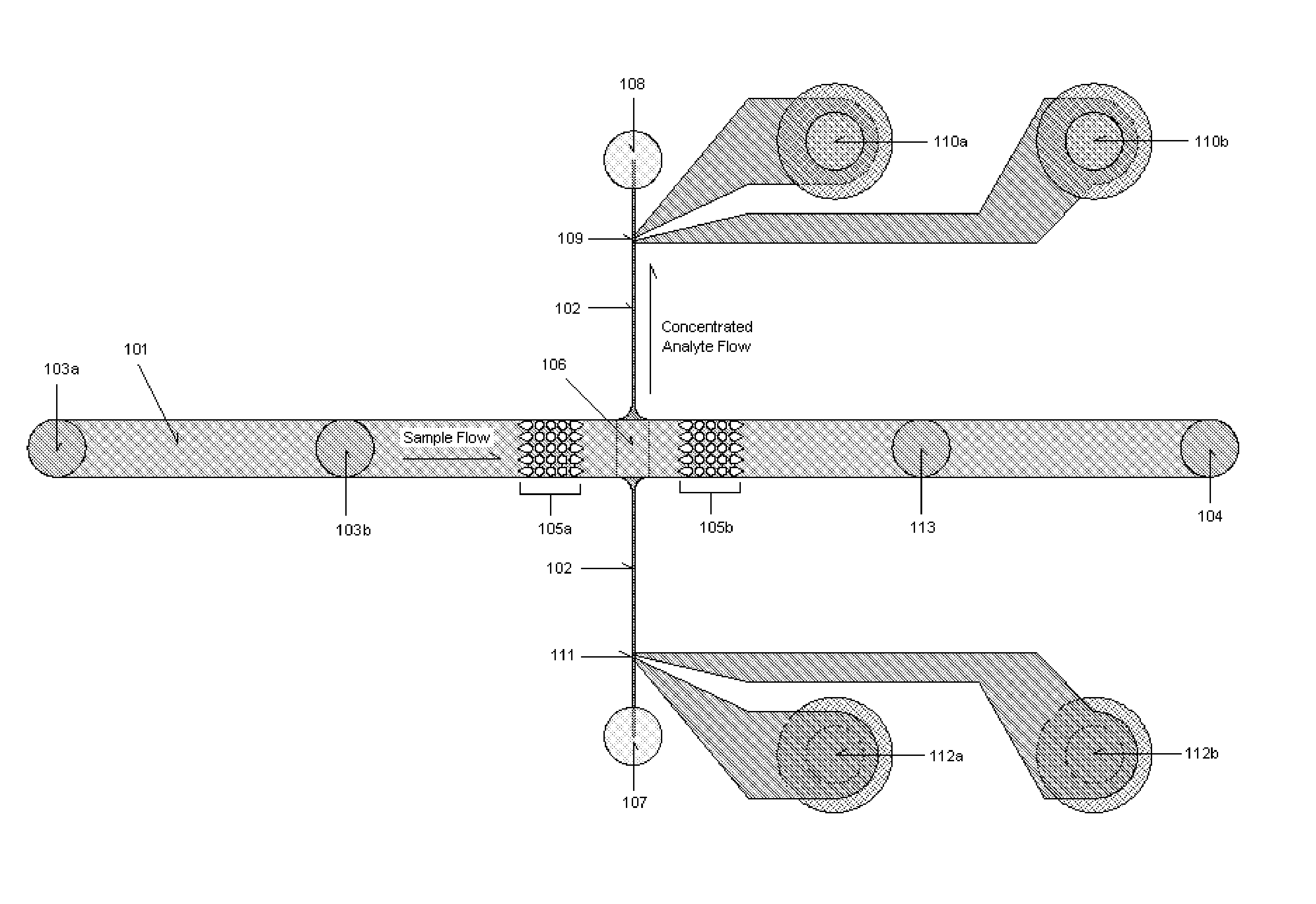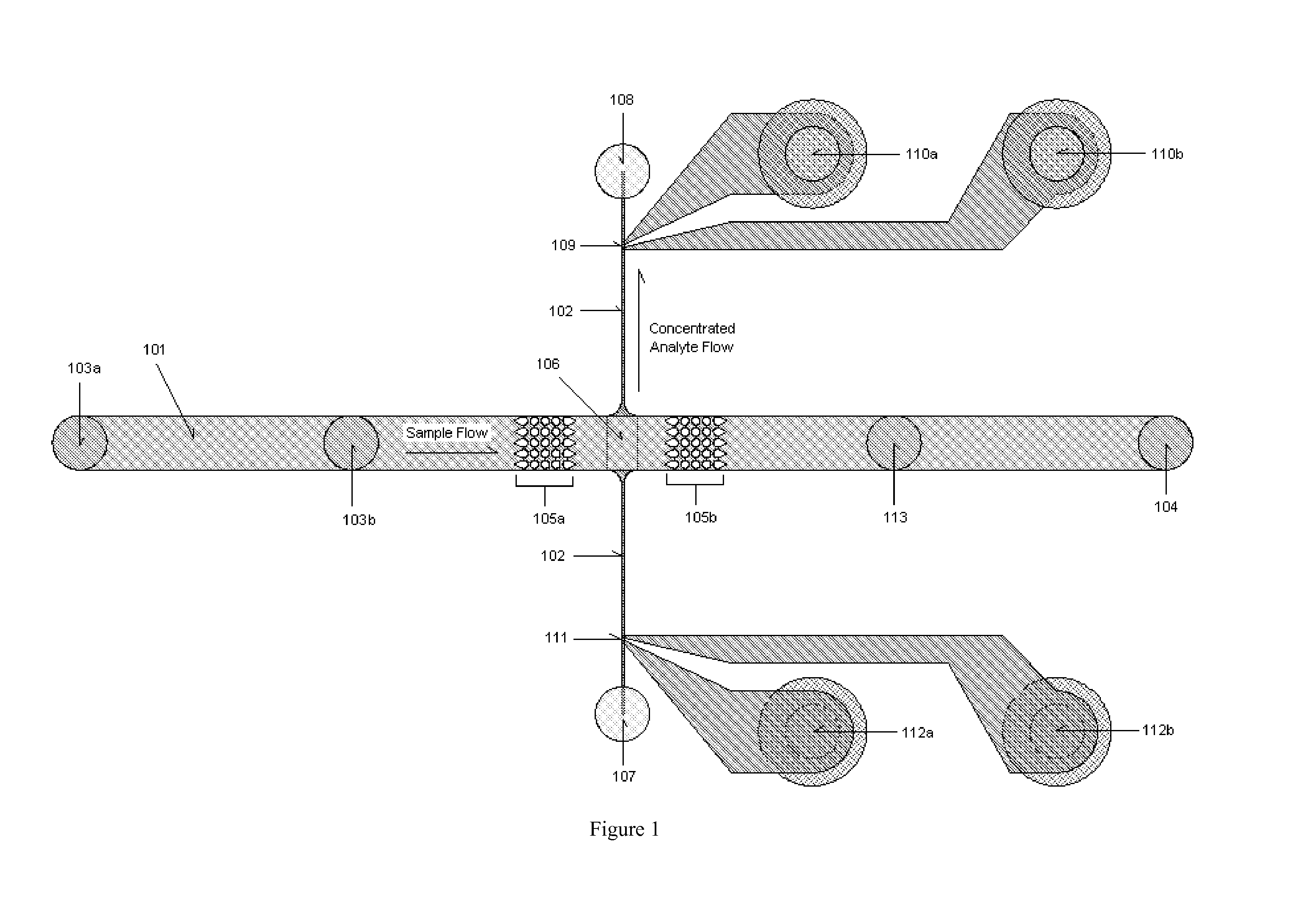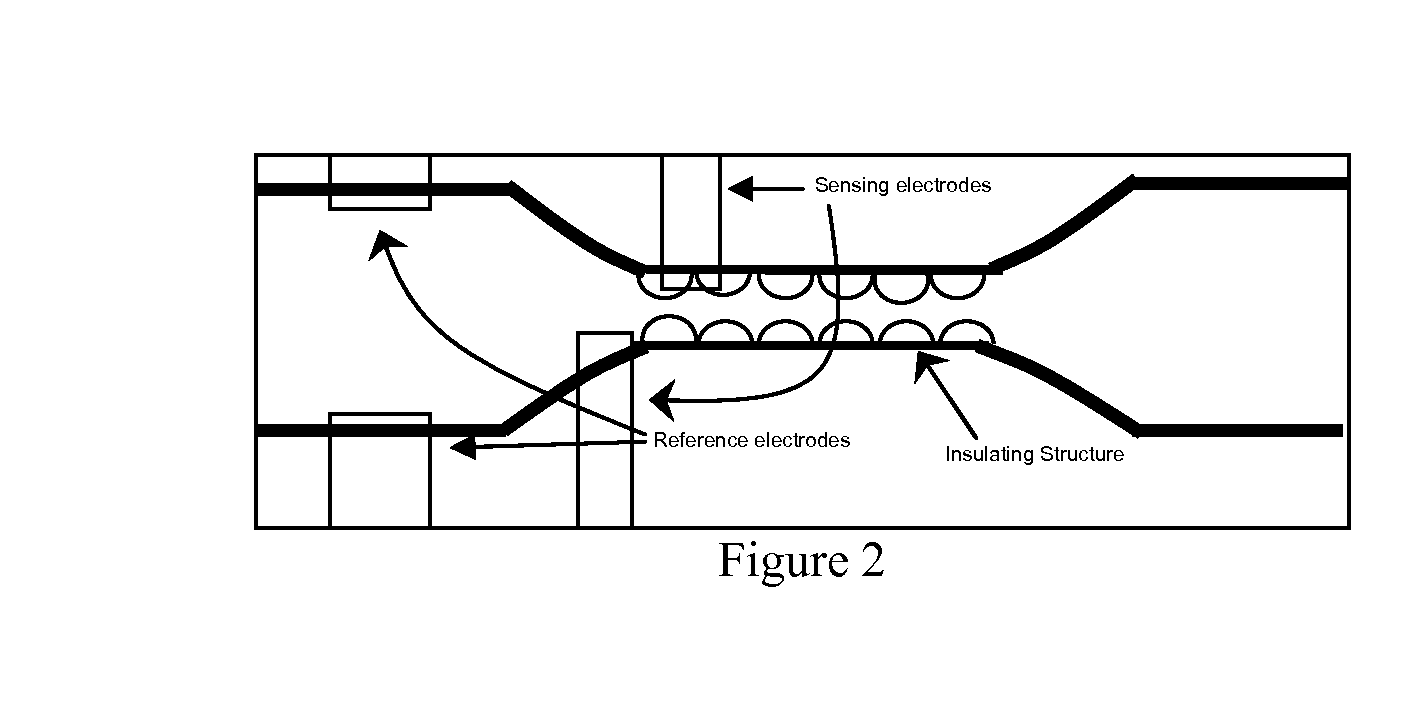Insulator-Based DEP with Impedance Measurements for Analyte Detection
an analyte detection and impedance measurement technology, applied in the direction of fluid pressure measurement, liquid/fluent solid measurement, peptide measurement, etc., can solve the problems of affecting performance, depim is problematic, and prior art methods take fifteen to twenty minutes before detection
- Summary
- Abstract
- Description
- Claims
- Application Information
AI Technical Summary
Problems solved by technology
Method used
Image
Examples
example 1
iDEP Concentration
[0074]The necessary applied voltage for causing effective analyte concentration for different particle types may be determined using methods known in the art. For example, the minimum applied voltage required to concentrate and detect test particles, 2 μm diameter carboxylate-modified polystyrene beads (FluoSpheres™, Molecular Probes, Eugene, Oreg.) and viable B. subtilis spores (Raven Biological Laboratories, Omaha, Nebr.), was determined. Bead suspension samples were filtered using an appropriate pore size syringe filter to remove larger bead aggregates before use.
[0075]The test particles were suspended in a buffer solution (0.001% Tween 20, pH 8.0 (Sigma-Aldrich, St. Louis, Mo.)). The conductivity of the buffer solution was about 7 μS / cm. The buffer and test particles were mixed prior to introduction into the microchannel, however, the samples may be mixed in the microchannels (on-chip) using methods known in the art. Images were captured through optical fluores...
example 2
Impedance Detection
[0079]After iDEP concentration as provided in Example 1 was conducted, the impedances of samples of different concentrations of viable B. subtilis spores (Raven Biological Laboratories, Omaha, Nebr.) suspended in the buffer solution were determined. The spore concentrations were 103 / ml, 105 / ml, 5×106 / ml and 5×107 / ml
[0080]Impedance detection was performed by connecting the sensing electrodes to a lock-in amplifier (SR830 Lock-In Amplifier, Stanford Research Systems, Sunnyvale, Calif.) (providing a 50-mV rms amplitude sinusoidal signal at 200 Hz) in series with a voltage-dividing resistor (measured to be 10 MΩ). The lock-in amplifier served as the AC voltage source and voltmeter. A representation of the experimental setup is shown in FIG. 7. The phase offsets were recorded as functions of the concentration of spores in the test sample being introduced into the system. The layout of the system components can be seen in FIG. 8.
[0081]Changes in measured impedance in th...
example 3
Conventional Bulk Solution Impedance Detection
[0083]Suspensions of different concentrations of particles were assayed to assess whether the sensitivity of the device according to FIG. 1 is comparable to conventional bulk solution impedance devices. Different concentrations of viable B. subtilis spores (Raven Biological Laboratories, Omaha, Nebr.) suspended in the buffer solutions in concentrations of 103 / ml, 105 / ml, 5×106 / ml and 5×107 / ml were examined using 20-ml glass vials and cylindrical (0.029 in. dia.) stainless steel electrodes, which were spaced 0.5 inches apart, center-to-center, and extended 1.65 inches below the top of the vials such that they were submerged in the test samples.
[0084]All applied voltages were a single-frequency AC signal. A SR830 Lock-In Amplifier (Stanford Research Systems, Sunnyvale, Calif.) was used as the voltage source and ammeter.
[0085]The terminals of the voltage source were rigidly connected to the stainless steel electrodes submerged in the sample...
PUM
| Property | Measurement | Unit |
|---|---|---|
| frequency | aaaaa | aaaaa |
| frequencies | aaaaa | aaaaa |
| frequencies | aaaaa | aaaaa |
Abstract
Description
Claims
Application Information
 Login to View More
Login to View More - R&D
- Intellectual Property
- Life Sciences
- Materials
- Tech Scout
- Unparalleled Data Quality
- Higher Quality Content
- 60% Fewer Hallucinations
Browse by: Latest US Patents, China's latest patents, Technical Efficacy Thesaurus, Application Domain, Technology Topic, Popular Technical Reports.
© 2025 PatSnap. All rights reserved.Legal|Privacy policy|Modern Slavery Act Transparency Statement|Sitemap|About US| Contact US: help@patsnap.com



